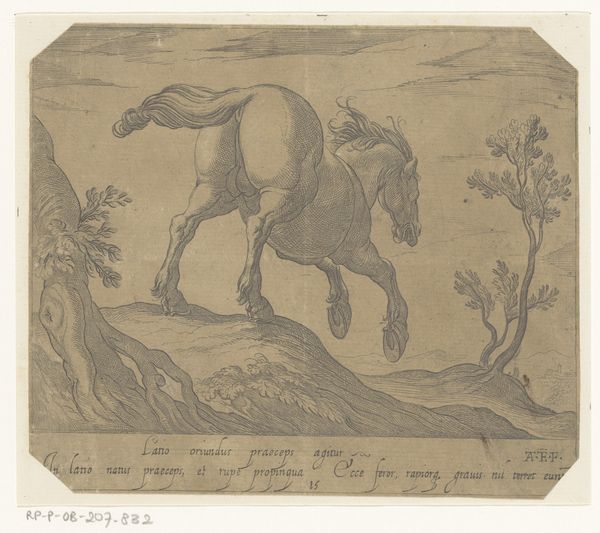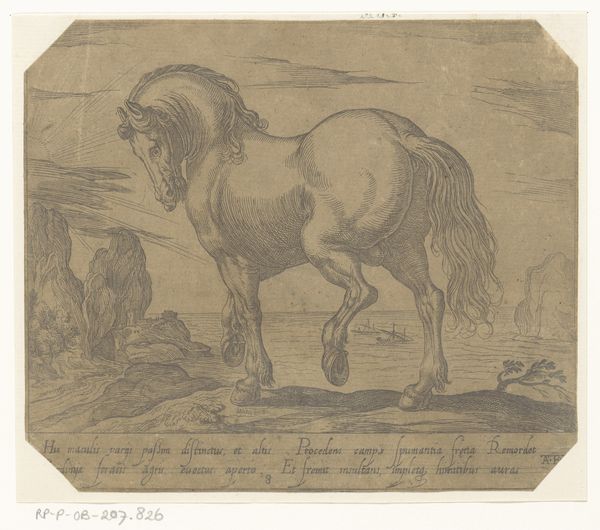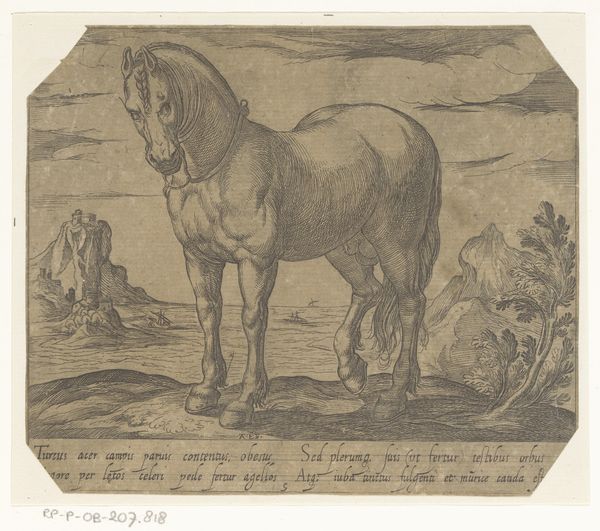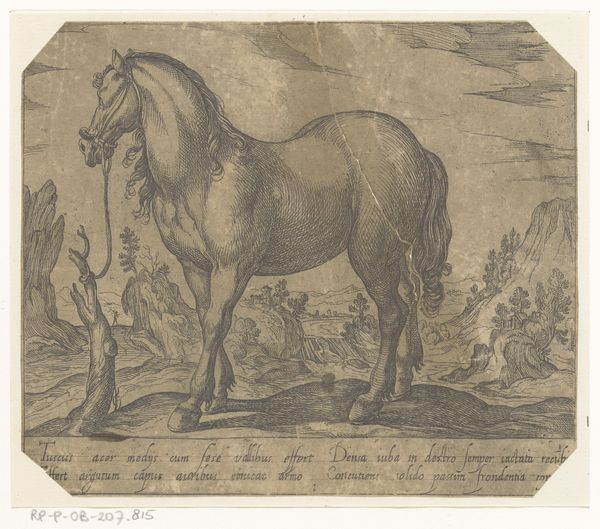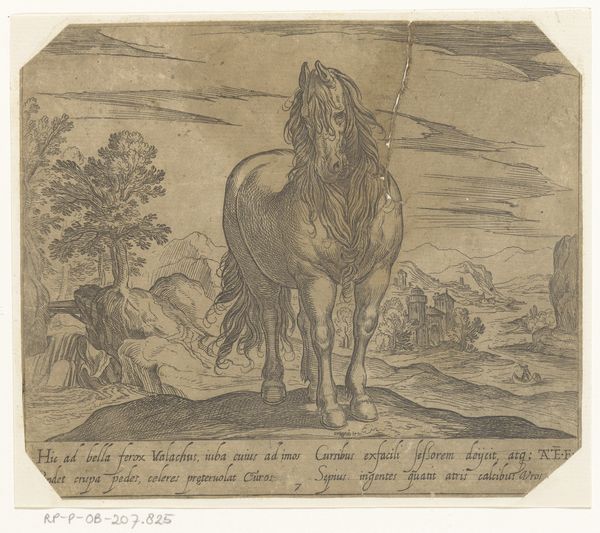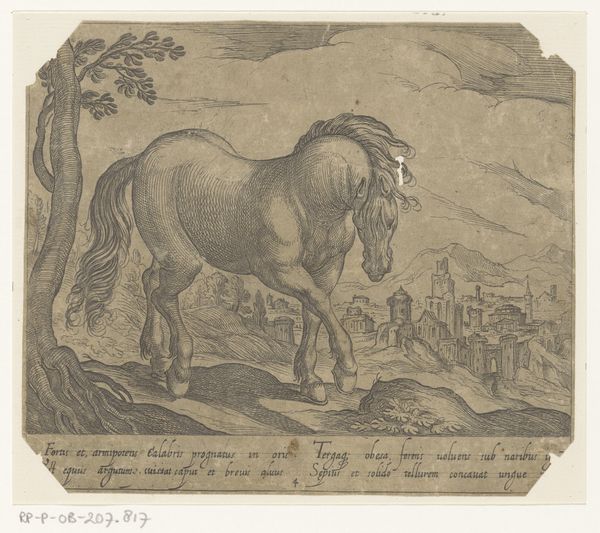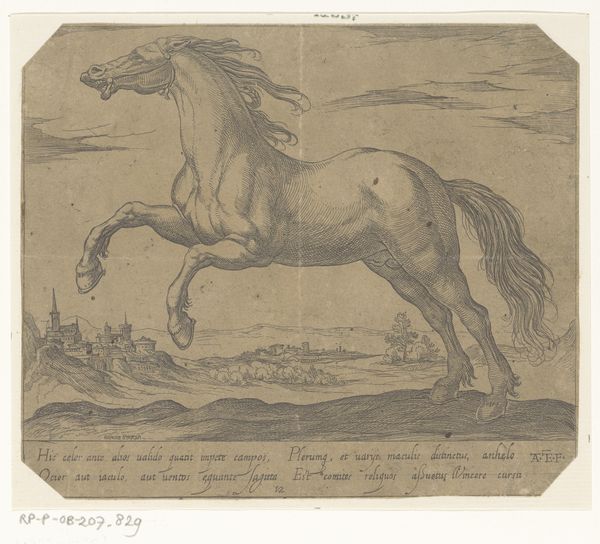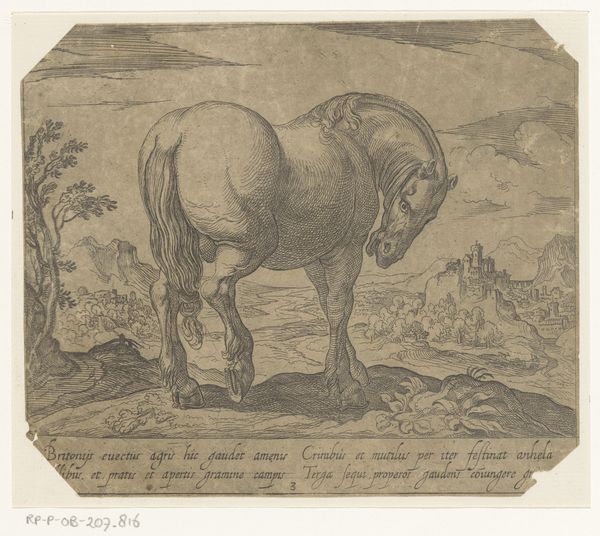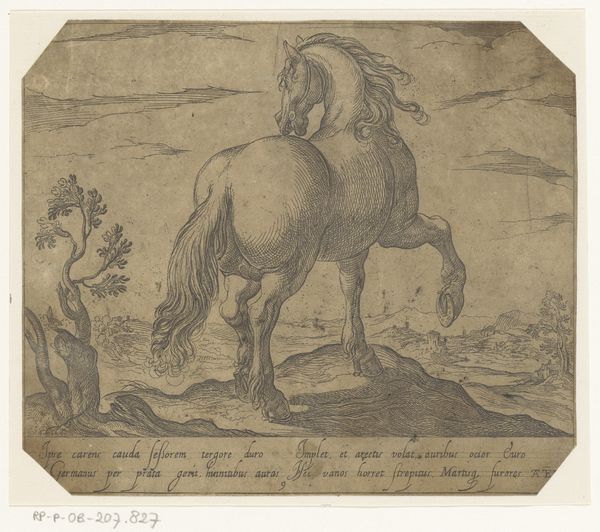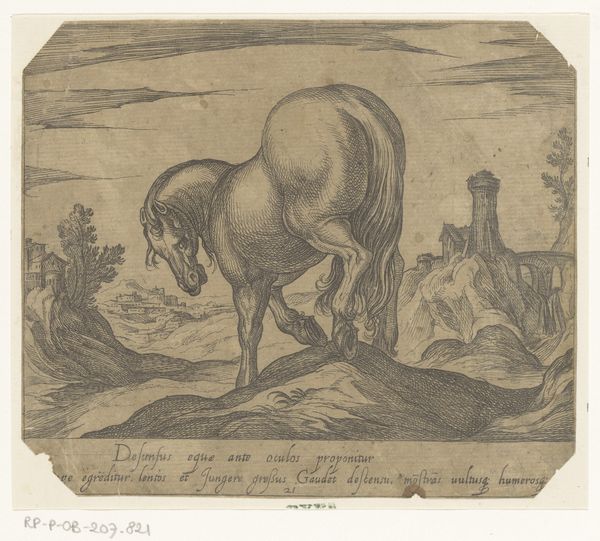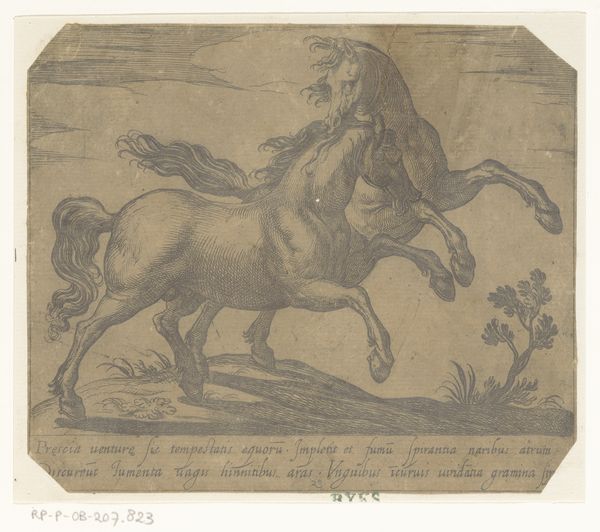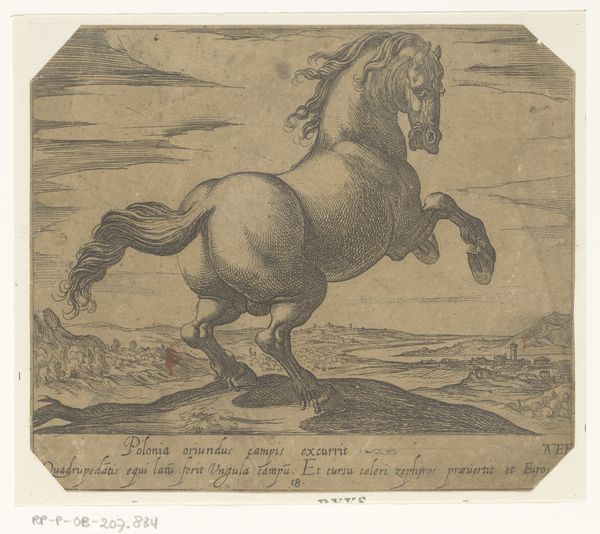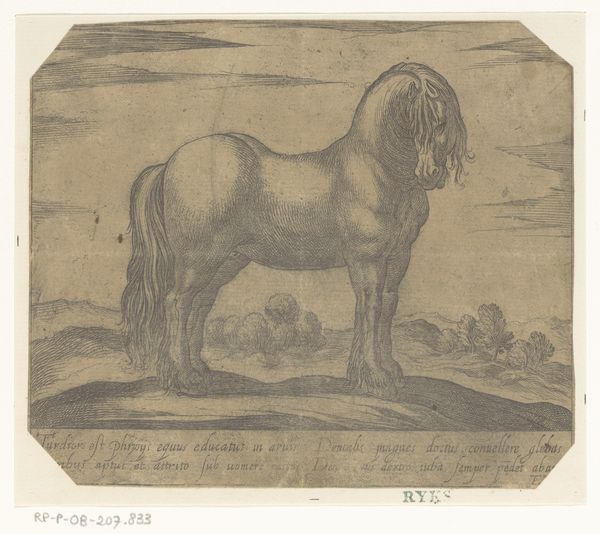
drawing, print, engraving
#
drawing
# print
#
pencil sketch
#
landscape
#
figuration
#
horse
#
italian-renaissance
#
engraving
#
realism
Dimensions: height 141 mm, width 165 mm
Copyright: Rijks Museum: Open Domain
Curator: Look at this poised and somewhat melancholic horse in Antonio Tempesta's "Standing Horse Facing Right," created around 1590. It's an engraving, a detailed print. My first thought is that the musculature is remarkable, almost heroic. Editor: The stillness strikes me—the horse seems burdened, not just physically but also perhaps metaphorically by the very idea of strength it represents. Do you get a sense that this is about power dynamics beyond mere anatomy? Curator: Absolutely. Observe how Tempesta contrasts the sharp lines defining the horse with the softer, more blurred landscape in the background. The horse dominates, commanding the foreground, doesn't it? Editor: And considering the Italian Renaissance context, it’s almost impossible not to see this animal situated within broader social narratives about equestrian power, wealth, and status—often violently asserted and maintained through landscape control. The horse represents dominion. Curator: Notice too how Tempesta uses light and shadow to emphasize the animal's weight and volume, creating a tactile sense of presence. The subtle tonal gradations in the engraving, achieved through cross-hatching, really give form to this animal. Editor: But it's also worth mentioning the etymology of "horse," its connections with servitude, and the historical alignment with imperialistic designs. A more cynical person could observe that the very composition aestheticizes that exploitative dynamic. Curator: Perhaps, but from a formalist perspective, the masterful articulation of texture—the smooth hide versus the rough mane and tail—is undeniable. Tempesta uses the engraving technique to capture a spectrum of visual information, setting him apart. Editor: Even in that mastery, however, is a reflection of its social function, and its entanglement in complex systems. The image is rendered explicitly for elite male consumers that engage with nature solely via hunting parties. The horse almost operates as a luxury prop in this light. Curator: It’s hard to argue with the level of refined detail Tempesta offers us here, especially within his use of shadow and light on a singular figure in the animal. But I can concede this artwork offers much more context when considering socio-economic power relations that continue today. Editor: Yes, the conversation it ignites can teach us about what has not shifted from its particular historical moment.
Comments
No comments
Be the first to comment and join the conversation on the ultimate creative platform.
